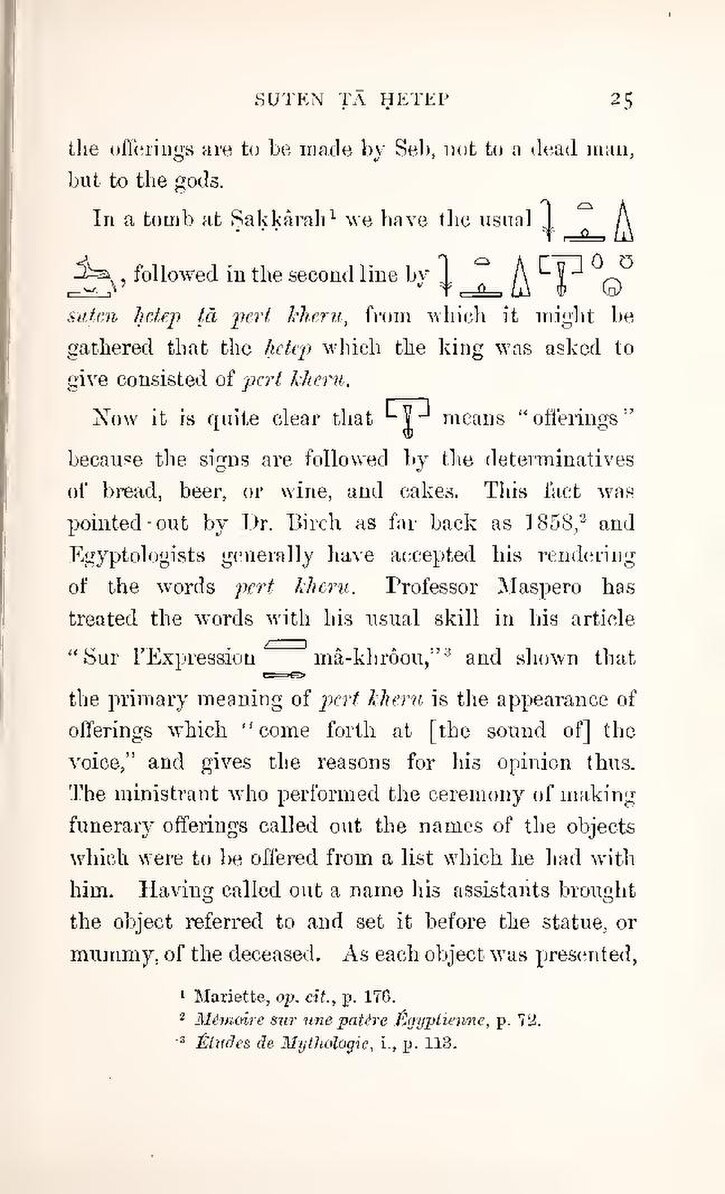the offerings are to be made by Seb, not to a dead man, but to the gods.
In a tomb at Ṣaḳḳârah[1] we have the usual
| |
, followed in the second line by
| |
suṭen ḥetep ṭā pert kheru, from which it might be gathered that the ḥetep which the king was asked to give consisted of pert kheru. Now it is quite clear that
| |
means "offerings" because the signs are followed by the determinatives of bread, beer, or wine, and cakes. This fact was pointed out by Dr. Birch as far back as 1858,[2] and Egyptologists generally have accepted his rendering of the words pert kheru. Professor Maspero has treated the words with his usual skill in his article "Sur l'Expression
| |
mâ-khrôou,"[3] and shown that the primary meaning of pert kheru is the appearance of offerings which "come forth at [the sound of] the voice," and gives the reason for his opinion thus. The ministrant who performed the ceremony of making funerary offerings called out the names of the objects which were to be offered from a list which he had with him. Having called out a name his assistants brought the object referred to and set it before the statue, or mummy, of the deceased. As each object was presented,
